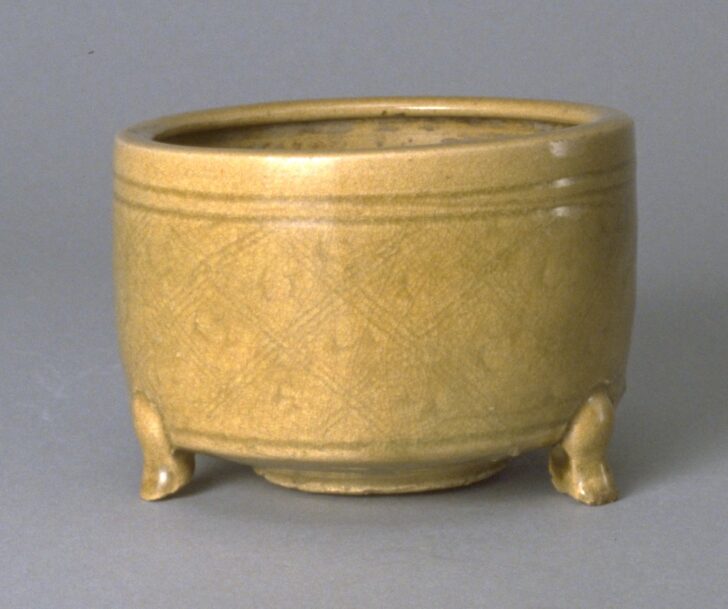Incense Burner
Chinese

Description
Subject Matter:
A stoneware celadon incense burner from the longquan kilns in Zhejiang province. The shape of this incense burner is based on zun (樽) and lian (璉) bronze forms, which was adopted by Longquan kilns in the twelfth century.
Longquan is the most representative, widespread, and esteemed ware of the Southern Song dynasty (1127–1279). Production started during the Five Dynasties period (907–960) at the kilns near the market town of Longquan, where in later dynasties much of the ware was collected for shipping. Technological advances such as the development of a multi-chambered, rising kiln and the use of stacked saggars (protective clay boxes) allowed for increased production in the Southern Song. In Yuan (1279–1368) and Ming (1368–1644) times, the kilns supplied wares to a domestic market as well as to overseas markets in Korea, Japan, and Southeast Asia.
Physical Description:
This stoneware cylindrical vessel rests on a narrow, tall footring with additional tripod legs applied to the sides. The body of the vessel is incised with a diamond and dot pattern contained between bands, and it is covered in an olive brown celadon glaze.
Usage Rights:
If you are interested in using an image for a publication, please visit https://umma.umich.edu/request-image/ for more information and to fill out the online Image Rights and Reproductions Request Form.